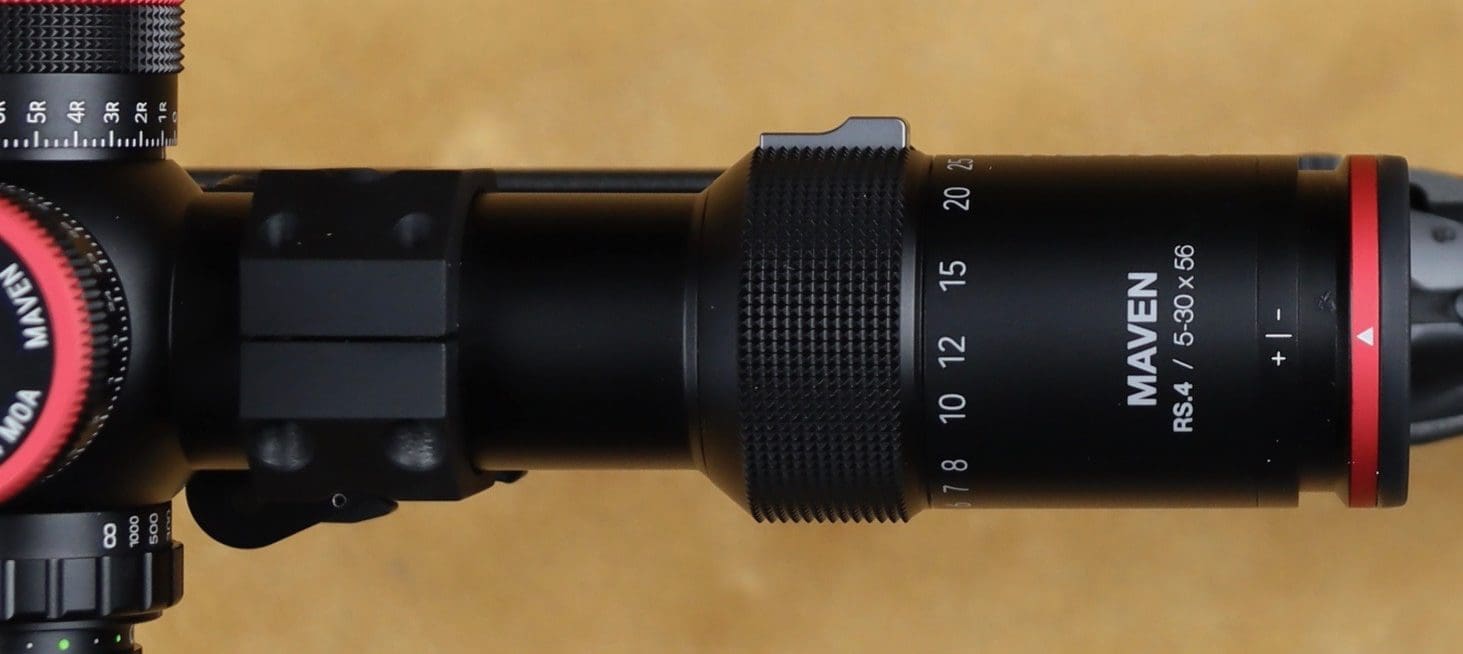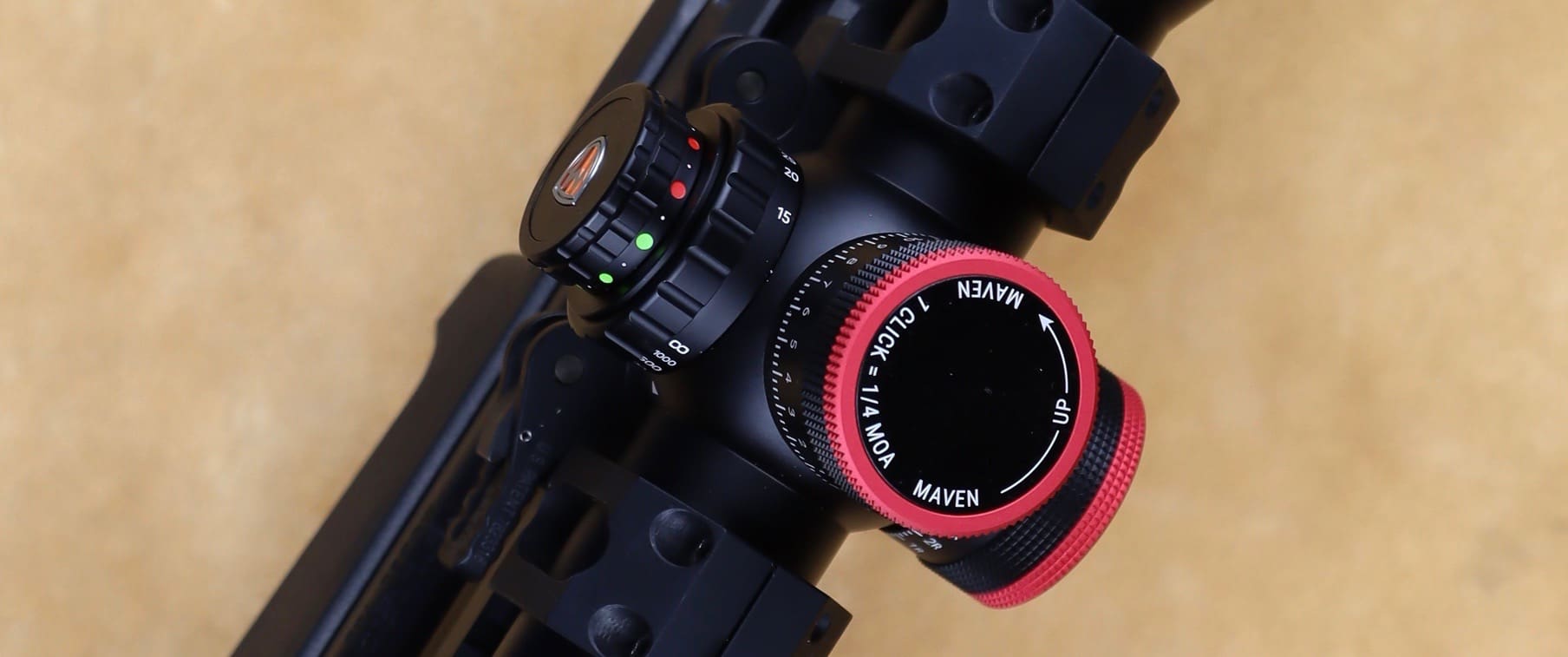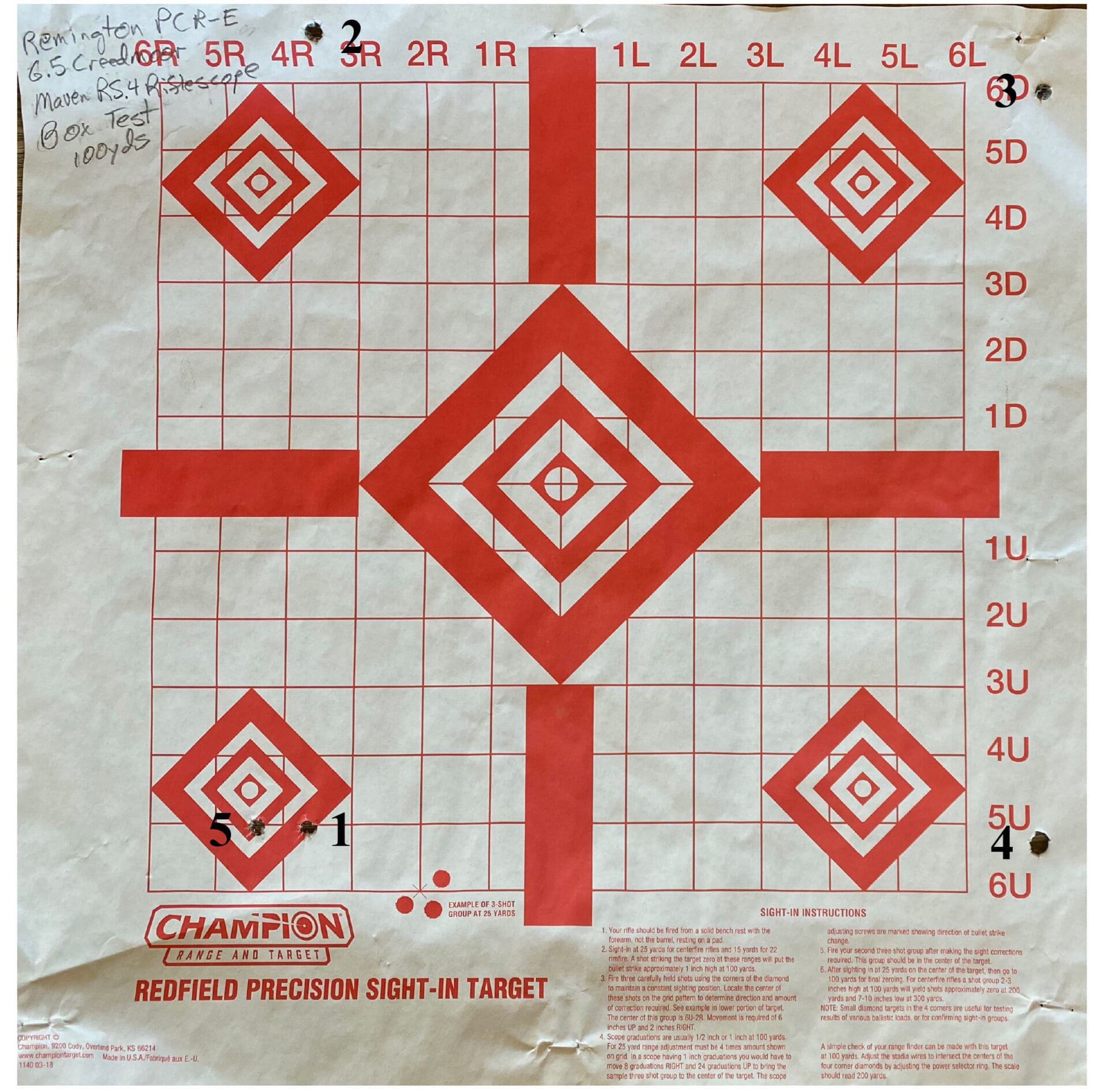
“On another note, I also work with Maven optics – a Lander, WY based direct-to-consumer optics company. They’re lining up to launch a new long-range rifle scope for the shooting range here in July. Would you have any room to test something like that in the near future?”
I assume that a lot of contributors are approached from time-to-time for unsolicited reviews. However, sometimes, when approached for a review, I’m not familiar with the manufacturer. The above message is a case-in-point. It came from Maven Optics‘ PR people. In case someone reading this may be in the same condition of cluelessness, let me give a brief description of Maven.
As Maven notes on their website:
“We broke the mold when we introduced our high-performance optics into the market in 2014 at almost half the cost of our competitors, the major European brands. We did this by implementing a Direct to Consumer business model and eliminating retail markup from the stores…Don’t make the mistake of comparing Maven products with similarly priced optics.”
So don’t look for Maven’s optics at your local gun shop. They have a demo program that allows some of their products to be tried out for two weeks with no strings attached except cost of shipping. They also have ‘demo centers’ where a potential buyer can go in and check out Maven products.
All of their optics have an unconditional lifetime warranty that, again quoting from the Maven website,
“If your optic becomes damaged or is at all defective (not including deliberate or cosmetic damage that does not hinder product performance), contact us immediately for repair or replacement. We don’t care where or when you bought it or if it was your fault or not – if it says Maven, we will take care of it.”
That’s not much information, but to summarize:
1) Company was founded in 2014.
2) They sell only from their website, direct to the customer.
3) A potential customer can handle Maven’s products before buying.
4) Maven provides an unconditional lifetime warranty for optics that are likely to get tough usage, especially for hunting applications.
The scope they wanted reviewed was the just-released, RS.4 5-30×56 FFP.


Maven wanted me to use their ‘Custom Builder‘ as well. The custom options offered include such cosmetic touches as the highlight color of the ring on the objective end of the scope and engraving of up to 30 characters. ‘Mike Arnold, Superhunter’ would have worked, except that Maven wanted the scope back after the review.
Other non-cosmetic options include the type of reticle. Options are simple (or simplified), holdover reticle [SHR-W (MOA), SHR-W (MIL)], MOA-2 and CFR-MIL.
I had already decided on the reticle I wanted — SHR-W (MOA) — so all that was left was to select the color scheme. I probably found that way too exciting, but it was fun ‘personalizing’ the RS.4.
Here is how it turned out:

Obviously, such a high top-end magnification (30x) and large objective lens diameter (56mm) are designed for long-distance shooting. The scope’s magnification, light-capturing capabilities and clarity were a great aid for accuracy at the longest distances.

I mounted he scope on the new Remington PCR Enhanced rifle in 6.5 Creedmoor and the following graph shows the results from that combination.

I realize that accuracy is not only (mainly) due to the optics. However, I cannot obtain this level of accuracy (sub-0.5MOA), especially at 400 yards, without clear and precise optics.
I had to adjust the elevation of the RS.4 as I walked the rifle out from 100 yards to 400 yards, and then back down again for another set of ammunition. The adjustments on the elevation (and windage) turret were repeatable (see the Box Test video). All of the dials, rings and turrets possessed a tight resistance. This allowed exact adjustments of elevation, windage and parallax (which had settings from 15 yd to ∞).

Another very useful feature of the RS.4 is selectable green or red dot illumination of the reticle.

Our eyesight depends on rods and cones to see objects and translate color. There are many more rods than cones, but rods don’t help with color discrimination. Cones provide such discrimination and are most sensitive in full-sun/daylight.
Since green is what cones ‘see’ more than red, that’s the color that’s more visible. If you are young and not partially red-green color blind, then you probably won’t notice how much brighter the green is versus the red illumination in a selectable reticle like on the RS.4.
I am not color blind, but my eyes are aging (aged?), so the green dot made a perceptible difference for faster target acquisition, and accuracy.
Repeatable Settings: Box Test
Though the best accuracy was obtained with Hornady American Gunner ammunition (see graph above), I had a surplus of Hornady ELD Match ammunition, and thus used that for a box test to make sure the RS.4’s elevation and windage adjustments track accurately.
I know that locking the rifle into a lead sled or shooting from a prone position would give a more accurate assessment and a prettier box, but I always choose to shoot from the bench. I have said it before, but I hunt rather than participate in competitive shooting, so I do range work with rests that are more similar to those I use while hunting.

Even though the rest wasn’t as rock solid as a lead sled, the repeatability of the RS.4 elevation and windage adjustments was demonstrated by the results. The video of the target (captured using a Longshot LR3 Target Camera and an I-phone 11 Pro) recorded the five sequential shots. Either the elevation or windage was adjusted by 12 MOA (i.e. approximately 12 inches) between each of the five shots.
That the RS.4 adjustments were, within the accuracy of my shooting, exact and repeatable was apparent. The scope tracks accurately. As an aside, using the brightness of the green dot really came in handy when trying to replicate the same hold on the target.

Out to 715 Yards
Now that I had the box test and the accuracy data for the three ammunition types out to 400 yards, it was time to take the RS.4 (and PCR-E) through its paces at longer ranges. For this analysis, I used my friend, Alex, as a guinea pig. He had never before shot a rifle beyond 200 yards. Like Frances before him, he would be able to show what a newcomer to longer-distance shooting could accomplish using, in this case, the Maven optics.
Alex and I shot at targets at distances between 300 and 715 yards. The light conditions were full-sun, but the metal targets located from about 600 yards onward were in increasing shade, with the 715 yard target in deep shade.

I won’t keep you in suspense. The photo shows Alex with his group fired into the 715 yard steel target. Alex’s hand is 5 3/8″ from heel to tip of middle finger; his group was sub-0.5 MOA. As with my work at 100-400 yards, we both found the Maven RS.4 to be bright and crystal clear, excellent out to the longest distances we had available.
No shots missed their mark from either of us. The distances for this second session were 300, 400, 546, 610, 670, and 715 yards. Again, excellent optics are a must if that kind of accuracy is to be achieved.
Also, zeroing at 100 yards, we went immediately to 546 yards, and then to the 610 and 715 yard targets. We then worked back to shorter distances. Every time we readjusted the elevation and windage to match the Kestrel data, the dials adjusted to the point-of-aim needed.
Conclusions
The RS.4 5-30×56 isn’t a riflescope that you’ll want to carry along on a seven-day backpacking trip after elk. However, if you want a riflescope to help you reach out from a whitetail ‘beanfield’ stand, or across a prairie dog town, this scope would be ideal. Likewise, if you’re into long-range competitive shooting at 750+ yards, you’ll do well to check out this riflescope.
Specifications: Maven RS.4 – 5-30×56 FFP Riflescope
Magnification: 5x – 30x
Objective Lens Diameter: 56mm
Eye Relief: 3-3.6 in
Field of View: 23.3 ft (5x); 3.9 ft (30x)
Tube Size: 34mm
Focal Plane: First
Max Elevation Adjustment: 120 MOA
Max Windage Adjustment: 50 MOA
Parallax Settings: 15 yd – ∞
Length: 12.79 in
Weight: 35.4 oz
MSRP: $1800
Ratings (out of five stars):
Glass Quality * * * * *
I haven’t encountered better clarity, light-gathering ability or reticle sharpness in any of the many riflescopes I have now used and/or reviewed. I can’t state that the Maven is head-and-shoulders above a Nightforce, Vortex, Leupold, etc., but it’s at least as good as any the high-end products produced by these manufacturers and performs well in early morning or late afternoon low light conditions.
Durability * * * *
This is always a category that, except for my own riflescopes, I have to infer. This isn’t a scope I can test to failure. The RS.4 is constructed out of great materials, but it’s a brand new model. Its predecessors in the Maven line have had consistently great reviews. There’s no reason to believe the RS.4 won’t be every bit as durable.
Precision * * * * *
Two tests demonstrated the precision of the Maven RS.4. First, as I ‘walked’ the rifle from 100 – 400 yards, and back again, the elevation and windage adjustments remained consistent. Second, the box test revealed the repeatability of the RS.4 when making changes that equaled 48 MOA (elevation + windage).
Utility * * * * *
Again, the RS.4 has great clarity and precision. With its 35x top-end magnification it’s ideal for long-range shooting. However, these attributes come with a cost in terms of weight (over two pounds) and a larger silhouette that has to be accommodated with a larger base and rings. That’s a good pound heavier than a Leupold riflescope I’ll be carrying in Mozambique this November. This isn’t a scope you’ll want to lug through the wilderness on a hunting rifle. This is a scope that’s meant to be mounted on a precision rifle and shot from a fixed position, usually a bench.
Overall * * * * *
I was very impressed with the Maven RS.4. It has all the bells and whistles, plus some, of riflescopes that cost a good bit more. At $1800, this is not inexpensive…until you put it up against similar glass from competing optics makers. Maven says that’s because they’ve cut out the middlemen and ship straight to the client. I am not a business person, but the RS.4 is a great performer that’s worth one of those $1800.
Mike Arnold writes for a number of outlets; links to other articles can be found here.
All photos and video courtesy of Mike Arnold.









Awesome review but I have one question. You mentioned this isn’t a scope you would carry on a 7 day elk hunt. Why is that?